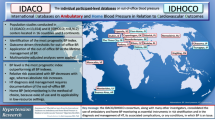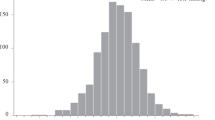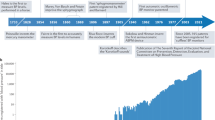Abstract
No studies examined sex differences in relation to the prognostic significance of self-measured home blood pressure (HBP). We compared the predictive power for the risk of cardiovascular events in 1547 women and 1516 men with hypertension using HBP captured at treatment-free baseline and during on-treatment follow-up, based on the Hypertension Objective Treatment Based on Measurement by Electrical Devices of Blood Pressure (HOMED-BP) study. To express the change in risk for the composite cardiovascular endpoint associated with a 1–SD increase in HBP at baseline or on treatment, we derived multivariable-adjusted hazard ratios (HR) based on a Cox regression model. Over a median follow-up of 7.3 years, 100 composite events occurred, including 40 events in women. In women, systolic HBP both at baseline and on-treatment showed significant risk increment (at baseline: HR per 1-SD increment, 1.62; 95% confidence interval [CI], 1.17–2.24. on-treatment: HR, 1.74; 95% CI, 1.32–2.29). However, systolic HBP at baseline did not predict cardiovascular events in men (P = 0.25). On-treatment HBP was significantly associated with cardiovascular risk (P ≤ 0.012) irrespective of sex. Nevertheless, the point estimate of HR for systolic HBP in men (1.33) was less than that in women (1.74), and the interaction of sex with 1 SD-increase in systolic HBP in cardiovascular risk was significant irrespective of baseline (P = 0.039) or follow-up (P = 0.040) measurement when they were mutually adjusted. The increase in cardiovascular risk with the systolic HBP was steeper in women than in men for both baseline and on-treatment. The current findings unveil the importance of the control of systolic HBP, especially in women. Clinical Trial Registration: UMIN Clinical Trial Registry (http://www.umin.ac.jp/ctr), Unique identifier: C000000137.

This is a preview of subscription content, access via your institution
Access options
Subscribe to this journal
Receive 12 print issues and online access
$259.00 per year
only $21.58 per issue
Buy this article
- Purchase on Springer Link
- Instant access to full article PDF
Prices may be subject to local taxes which are calculated during checkout
Similar content being viewed by others
References
Ohkubo T, Imai Y, Tsuji I, Nagai K, Kato J, Kikuchi N, et al. Home blood pressure measurement has a stronger predictive power for mortality than does screening blood pressure measurement: a population-based observation in Ohasama, Japan. J Hypertens. 1998;16:971–5.
Asayama K, Satoh M, Murakami Y, Ohkubo T, Nagasawa SY, Tsuji I, et al. Cardiovascular risk with and without antihypertensive drug treatment in the Japanese general population: participant-level meta-analysis. Hypertension. 2014;63:1189–97.
Niiranen TJ, Hanninen MR, Johansson J, Reunanen A, Jula AM. Home-measured blood pressure is a stronger predictor of cardiovascular risk than office blood pressure: the Finn-Home study. Hypertension. 2010;55:1346–51.
Asayama K, Ohkubo T, Metoki H, Obara T, Inoue R, Kikuya M, et al. Cardiovascular outcomes in the first trial of antihypertensive therapy guided by self-measured home blood pressure. Hypertens Res. 2012;35:1102–10.
Watabe D, Asayama K, Hanazawa T, Hosaka M, Satoh M, Yasui D, et al. Predictive power of home blood pressure indices at baseline and during follow-up in hypertensive patients: HOMED-BP study. Hypertens Res. 2018;41:622–8.
Lewington S, Clarke R, Qizilbash N, Peto R, Collins R. Age-specific relevance of usual blood pressure to vascular mortality: a meta-analysis of individual data for one million adults in 61 prospective studies. Lancet. 2002;360:1903–13.
Miura K, Nakagawa H, Ohashi Y, Harada A, Taguri M, Kushiro T, et al. Four blood pressure indexes and the risk of stroke and myocardial infarction in Japanese men and women: a meta-analysis of 16 cohort studies. Circulation. 2009;119:1892–8.
Fujiyoshi A, Ohkubo T, Miura K, Murakami Y, Nagasawa SY, Okamura T, et al. Blood pressure categories and long-term risk of cardiovascular disease according to age group in Japanese men and women. Hypertens Res. 2012;35:947–53.
Boggia J, Thijs L, Hansen TW, Li Y, Kikuya M, Bjorklund-Bodegard K, et al. Ambulatory blood pressure monitoring in 9357 subjects from 11 populations highlights missed opportunities for cardiovascular prevention in women. Hypertension. 2011;57:397–405.
van den Hoogen PC, van Popele NM, Feskens EJ, van der Kuip DA, Grobbee DE, Hofman A, et al. Blood pressure and risk of myocardial infarction in elderly men and women: the Rotterdam study. J Hypertens. 1999;17:1373–8.
Mak KH, Ma S, Heng D, Tan CE, Tai ES, Topol EJ, et al. Impact of sex, metabolic syndrome, and diabetes mellitus on cardiovascular events. Am J Cardiol. 2007;100:227–33.
Jonsdottir LS, Sigfusson N, Gudnason V, Sigvaldason H, Thorgeirsson G. Do lipids, blood pressure, diabetes, and smoking confer equal risk of myocardial infarction in women as in men? The Reykjavik Study. J Cardiovasc Risk. 2002;9:67–76.
Roush GC, Fagard RH, Salles GF, Pierdomenico SD, Reboldi G, Verdecchia P, et al. Prognostic impact of sex-ambulatory blood pressure interactions in 10 cohorts of 17 312 patients diagnosed with hypertension: systematic review and meta-analysis. J Hypertens. 2015;33:212–20.
Nomura K, Asayama K, Thijs L, Niiranen TJ, Lujambio I, Boggia J, et al. Thresholds for conventional and home blood pressure by sex and age in 5018 participants from 5 populations. Hypertension. 2014;64:695–701.
Hansson L, Hedner T, Dahlof B. Prospective randomized open blinded end-point (PROBE) study. A novel design for intervention trials. Prospective Randomized Open Blinded End-Point. Blood Press. 1992;1:113–9.
Fujiwara T, Nishimura T, Ohkuko T, Imai Y. Rationale and design of HOMED-BP Study: hypertension objective treatment based on measurement by electrical devices of blood pressure study. Blood Press Monit. 2002;7:77–82.
Asayama K, Ohkubo T, Hanazawa T, Watabe D, Hosaka M, Satoh M, et al. Does antihypertensive drug class affect day-to-day variability of self-measured home blood pressure? the HOMED-BP study. J Am Heart Assoc. 2016;5:e002995.
World Medical Association. World Medical Association Declaration of Helsinki: ethical principles for medical research involving human subjects. JAMA. 2013;310:2191–4.
White WB, Anwar YA. Evaluation of the overall efficacy of the Omron office digital blood pressure HEM-907 monitor in adults. Blood Press Monit. 2001;6:107–10.
Chonan K, Kikuya M, Araki T, Fujiwara T, Suzuki M, Michimata M, et al. Device for the self-measurement of blood pressure that can monitor blood pressure during sleep. Blood Press Monit. 2001;6:203–5.
Staessen J, Bulpitt C, Clement D, De Leeuw P, Fagard R, Fletcher A, et al. Relation between mortality and treated blood pressure in elderly patients with hypertension: report of the European Working Party on High Blood Pressure in the Elderly. BMJ. 1989;298:1552–6.
World Health Organization. World Health Organization Collaborating Centre for Drug Statistics Methodology System of Defined Daily Doses. 2018. http://www.whocc.no/atc_ddd_index/. Accessed September 14, 2018.
Ji H, Niiranen TJ, Rader F, Henglin M, Kim A, Ebinger JE, et al. Sex differences in blood pressure associations with cardiovascular outcomes. Circulation. 2021;143:761–3.
Asayama K, Ohkubo T, Kikuya M, Obara T, Metoki H, Inoue R, et al. Prediction of stroke by home “morning” versus “evening” blood pressure values: the Ohasama study. Hypertension. 2006;48:737–43.
Chonan K, Hashimoto J, Ohkubo T, Tsuji I, Nagai K, Kikuya M, et al. Insufficient duration of action of antihypertensive drugs mediates high blood pressure in the morning in hypertensive population: the Ohasama study. Clin Exp Hypertens. 2002;24:261–75.
Asayama K, Satoh M, Kikuya M. Diurnal blood pressure changes. Hypertens Res. 2018;41:669–78.
Yang WY, Melgarejo JD, Thijs L, Zhang ZY, Boggia J, Wei FF, et al. Association of office and ambulatory blood pressure with mortality and cardiovascular outcomes. JAMA. 2019;322:409–20.
Miura K, Nagai M, Ohkubo T. Epidemiology of Hypertension in Japan. Circulation J. 2013;77:2226–31.
Dubey RK, Oparil S, Imthurn B, Jackson EK. Sex hormones and hypertension. Cardiovasc Res. 2002;53:688–708.
Mendelsohn ME, Karas RH. The protective effects of estrogen on the cardiovascular system. N Engl J Med. 1999;340:1801–11.
Hilliard LM, Sampson AK, Brown RD, Denton KM. The “his and hers” of the renin-angiotensin system. Curr hypertens Rep. 2013;15:71–79.
Sato W, Nomura K, Satoh M, Hara A, Tsubota-Utsugi M, Murakami T, et al. Female reproductive events and subclinical atherosclerosis of the brain and carotid arteriopathy: the Ohasama study. J Atheroscler Thromb. 2023;30:956–978
Turnbull F, Woodward M, Neal B, Barzi F, Ninomiya T, Chalmers J, et al. Do men and women respond differently to blood pressure-lowering treatment? Results of prospectively designed overviews of randomized trials. Eur Heart J. 2008;29:2669–80.
Ochoa-Jimenez R, Viquez-Beita K, Daluwatte C, Zusterzeel R. Sex differences of patients with systemic hypertension (from the analysis of the Systolic Blood Pressure Intervention Trial [SPRINT]). Am J Cardiol. 2018;122:985–93.
Staessen J, Amery A, Fagard R. Isolated systolic hypertension in the elderly. J Hypertens. 1990;8:393–405.
Umemura S, Arima H, Arima S, Asayama K, Dohi Y, Hirooka Y, et al. The Japanese Society of Hypertension Guidelines for the Management of Hypertension (JSH 2019). Hypertens Res. 2019;42:1235–481.
Unger T, Borghi C, Charchar F, Khan NA, Poulter NR, Prabhakaran D, et al. 2020 International Society of Hypertension global hypertension practice guidelines. Hypertension. 2020;75:1334–57.
Imai Y, Obara T, Ohkubo T. How many times should we ask subjects to measure blood pressure at home on each occasion? J Hypertens. 2007;25:1987–91.
Baghshomali S, Bushnell C. Reducing stroke in women with risk factor management: blood pressure and cholesterol. Women’s Health (Lond). 2014;10:535–44.
Acknowledgements
We are grateful all HOMED-BP study collaborators as listed previously [4] for their valuable contribution. We thank the staff of Tohoku University and Teikyo University for their valuable help. This study was funded by grants from the Japan Cardiovascular Research Foundation, the Japan Arteriosclerosis Prevention Fund, and Tohoku University. Fujitsu Systems East Limited (Tokyo, Japan) and Omron Healthcare Co., Ltd. (Kyoto, Japan) developed and maintained the Internet-based infrastructure for the measurement of the blood pressure at home and the management of patients. This study was also supported by Grants-in-Aid for Scientific Research (21H04984, 22H03358) from the Ministry of Education, Culture, Sports, Science and Technology, Japan, and ACRO Incubation Grants of Teikyo University, Japan. No funding agencies had any role in the design or conduct of the study; in the collection, analysis, or interpretation of the data; or in the preparation, review, or approval of the manuscript.
Author information
Authors and Affiliations
Corresponding author
Ethics declarations
Conflict of interest
KA, YI and TO concurrently held the position of director of the Tohoku Institute for Management of Blood Pressure and were supported by Omron Healthcare Co., Ltd. KA and TO received a joint research grant from Omron Healthcare Co., Ltd.
Additional information
Publisher’s note Springer Nature remains neutral with regard to jurisdictional claims in published maps and institutional affiliations.
Supplementary information
Rights and permissions
Springer Nature or its licensor (e.g. a society or other partner) holds exclusive rights to this article under a publishing agreement with the author(s) or other rightsholder(s); author self-archiving of the accepted manuscript version of this article is solely governed by the terms of such publishing agreement and applicable law.
About this article
Cite this article
Ohata, C., Asayama, K., Hosaka, M. et al. Self-measured home blood pressure highlights cardiovascular risk in women: the HOMED-BP study. Hypertens Res 46, 2400–2408 (2023). https://doi.org/10.1038/s41440-023-01408-6
Received:
Revised:
Accepted:
Published:
Issue Date:
DOI: https://doi.org/10.1038/s41440-023-01408-6
Keywords
This article is cited by
-
The importance of regular home blood pressure monitoring over the life course
Hypertension Research (2024)



